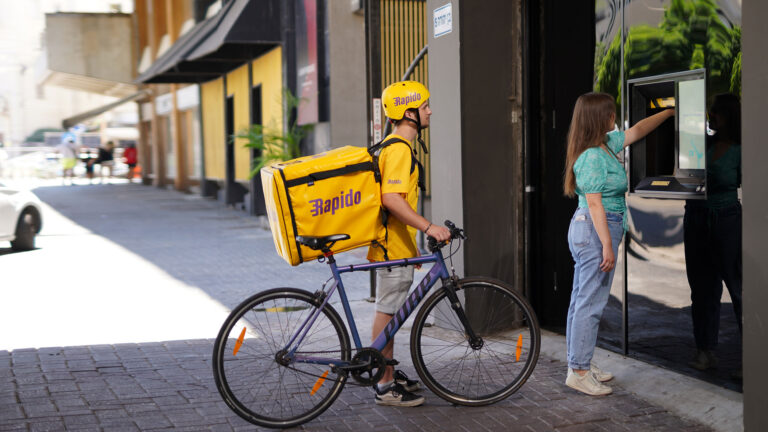
The eCommerce sector has been evolving at an unprecedented pace as consumer expectations for faster and more convenient delivery continue to rise. With the online grocery market expected to exceed $2T by 2030, retailers are looking for ways to evolve and scale their systems to meet the new digital, on-demand market in ways that standard brick-and-mortar stores (and their fulfillment methods) cannot. Furthermore, the pandemic had triggered an explosion of eCommerce and accelerated our shift to a more online-based consumer lifestyle, fueling customer demands and forcing retailers to adapt to a new and faster reality.
As a result, the industry has seen the emergence of new technologies (sometimes robotically-assisted) as an attempt at providing faster and more efficient order fulfillment while scaling down size and human workforce. As retailers search for ways to keep pace with the ever-growing volume and consumer demands, so too are their technological, operational and systematic needs.
Micro-Fulfillment Centers (MFCs)
One of the more common solutions in recent years are the micro-fulfillment centers. These facilities take up a few thousand square meters on average, and are strategically located near densely populated urban areas to allow brands and operators to have high proximity to their customers. This solution aims to streamline the retail fulfillment and delivery process. With time, these evolved to become automated micro-fulfillment centers, being paired with robotic retail automation solutions to streamline processes and fulfill online orders quicker and more efficiently. By bringing the fulfillment center closer to the customer, retailers reduce the distance the product needs to travel to reach their customers, minimizing the time it takes to complete the delivery process.
The Challenges With MFCs
These micro fulfillment centers, however, are only a fractional solution to the eCommerce boom and come with their own set of inefficiencies. The costs for setting up MFCs are extremely high and take several months (or more) to build or install. Furthermore, they still require a reasonably sized human workforce to maintain and operate, and their large size would mean paying a fortune in real estate and/or construction costs while still allowing a limited delivery timeframe. While providing necessary value for retailers, MFCs are difficult to scale due to their size, costs, and operational needs, making them less than ideal when it comes to practicality in meeting the ever-growing needs of eCommerce. In other words, there’s still room for important improvements to be made.
Nano-Fulfillment Centers (NFCs)
Many retailers have moved onto using a nano-fulfillment center, allowing them to address the obstacles to scale that come with MFCs. NFC’s are smaller than MFCs; instead of being thousands of square meters large, they’ve been shrunk to hundreds or even dozens, making them designed to be strategically deployed within cities rather than nearby. By utilizing hyperlocal proximity to customers, NFCs are better equipped to fulfill a higher volume of orders in drastically less time, enabling deliveries in under two hours. Rather than taking months to build, NFCs can take weeks to build and make operational. Although significantly better in every measurable way, NFCs in their current state still require manpower and resources to deploy successfully, categorizing them as projects by nature.
The Challenges With NFCs
Like MFCs, NFCs too come with challenges that make them difficult for retailers to implement with scale and rely on as a strategy for keeping up with the rapid growth of eCommerce. Being manual NFCs, these centers require a significant headcount to maintain and operate, causing companies to hire and train new employees in order to prepare and package orders, manage inventory and more, driving costs higher, rather than lower, and leaving the window wide open for human error and shrinkage. Even more so, being in urban areas often means the real estate in which they’re built is in higher demand, making them more expensive to build and own.
Bringing Automation to NFCs
Nano-fulfillment centers are one change away from being a practical, scalable, and optimal solution for retailers. Transitioning NFCs from manual to automated can arm them with significant advantages over any existing fulfillment centers.
Operated robotically and designed for peak-level performance without human intervention, automated NFCs produce hyper-efficient order fulfillment with significantly reduced costs by bringing the headcount to the bare minimum, if not zero. Automated NFCs are also small enough to be deployed nearly anywhere, therefore lowering associated real estate costs. This enables retailers to utilize hyperlocal logistics strategies to maximize last-mile operations, allowing them to achieve rapid delivery in as little as 30 minutes while reducing their carbon footprint. They further empower retailers to leverage modularity towards increasing order accuracy, implementing software-based stock predictions and inventory management, and get as close as logistically possible to customers, beyond that of standard NFCs.
As eCommerce continues to skyrocket and customer expectations rise perpetually, retailers are seeking to deploy practical solutions that enable quicker deliveries at increasingly greater order volume. Automated nano-fulfillment centers are emerging as the most cost-effective and strategic method for ensuring seamless operations and meeting eCommerce demands to produce maximal customer satisfaction.
